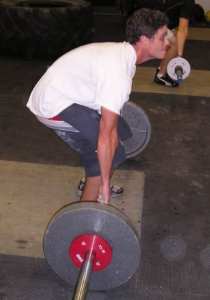I’ve been
doing some study on energy system development and recently came across a video that
really impressed me. For starters it is presented by a really smart guy, Eric
Oetter, but it's also backed up by scientific data; especially one, the Tabata
study, that often gets used to promote high intensity work not aerobic
training. Here I’ll offer some of the highlights of the video and a link to a
written version of the presentation if you care to read it in its entirety.
One of the first
takeaways was that the lactic and alactic energy systems (anaerobic systems
that produce short, explosive power) have the ability to be improved upon by
about 30% each. The aerobic system, on the other hand, can see up to a 240%
improvement. This is why so many “average” people can train for and actually
complete a marathon, but very few can post competitive 100M sprint times.
Next was how many negatives there are to focusing primarily on anaerobic type
training. Please note that I didn't say high intensity work is bad in general, but because it’s extremely sympathetic nervous system driven, heavy use of anaerobic training can
cause a host of negative adaptations especially coupled with the stressors of
modern life. People can become “stuck” in a sympathetic state where their body
never really gets into recovery mode. They just end up in a continual “fight or
flight” state creating a negative feedback loop which is generally not good for
ones health.
One of the main
adaptations to continual lactic type training is a thickening of the myocardium
of the left ventricle. In other words body building for the heart, which allows
a stronger contraction but limited ability to stretch. This means the stroke
volume, amount of blood pumped out at each contraction, isn’t increased so the only way to get more blood to the body as exercise intensity increases is by increasing pump speed. Focusing on an aerobic
base first causes an overall larger left ventricle so the heart has a larger
capacity. This means a higher stroke volume or more blood ejected on each
contraction, which equates to a lower overall heart rate. This is good because
a resting heart rate above 60 beats per minute usually equates to someone more
or less stuck in a sympathetic state, a continual fight or flight mode, which
is not a good thing. If you are someone with limited capacity for exercise duration
you may want to check your resting heart rate, if it’s above 60 you would
probably benefit greatly from increased aerobic training.
 |
| Left ventricle hypertrophy creates a stronger contraction, but limited ability to stretch and take in more blood. |
Lastly, and most interestingly
to me, the Tabata study was used to back up the idea that one should focus on
building a good aerobic base rather than doing super high intensity work all
the time. The Tabata study showed that the participants who performed the high
intensity protocol saw an increase of about 23% in anaerobic capacity over the
first four weeks. They realized another 5% increase over the subsequent two
weeks, totaling a 28% increase in about 6 weeks. The part that is so
fascinating is that if the body has the capacity to improve the anaerobic
systems by about 30% total and it only took 6 weeks to see a 28% increase,
there really isn’t a need to continue doing high intensity work past this
point.
The take-home is basically
that when mapping out a training program, aerobic work should come first,
followed by alactic work, and lastly the high intensity stuff about six –
eight weeks from competition. Or, if you don't have a specific competition date, don't neglect training at lower intensities to realize aerobic based training adaptations.
-KO

































